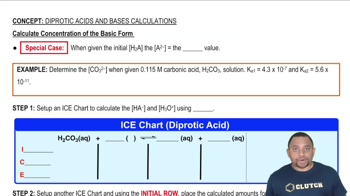Here are the essential concepts you must grasp in order to answer the question correctly.
Stoichiometry
Stoichiometry is the calculation of reactants and products in chemical reactions based on the balanced chemical equation. In this case, the reaction between hydrogen (H2) and bromine (Br2) to form hydrogen bromide (HBr) follows a 1:1:2 molar ratio. Understanding stoichiometry is essential for determining how much of each substance is consumed or produced at equilibrium.
Recommended video:
Equilibrium Constant
Chemical equilibrium occurs when the rates of the forward and reverse reactions are equal, resulting in constant concentrations of reactants and products. The equilibrium constant (K) can be used to express the ratio of the concentrations of products to reactants at equilibrium. This concept is crucial for calculating the concentrations of H2, Br2, and HBr in the given reaction.
Recommended video:
Concentration Calculations
Concentration is defined as the amount of a substance per unit volume of solution, typically expressed in moles per liter (M). To find the equilibrium concentrations of H2, Br2, and HBr, one must convert the masses of the substances into moles and then divide by the volume of the vessel. This step is vital for accurately determining the concentrations at equilibrium.
Recommended video:
Calculate Concentration of the Basic Form




